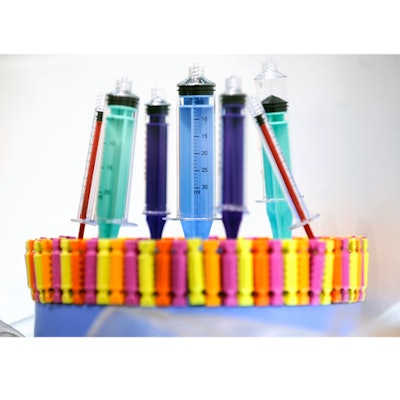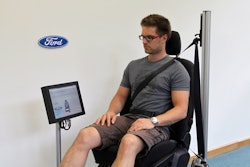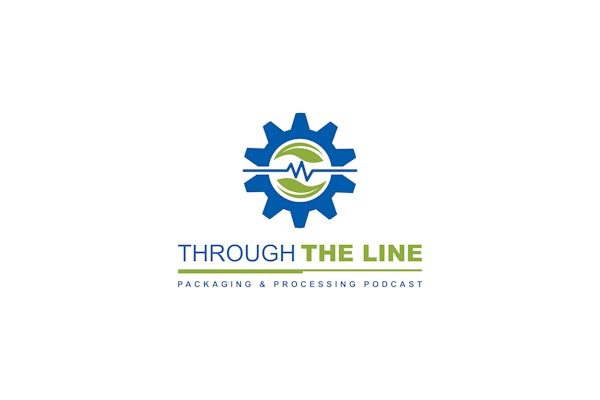
The Assn. for Electrical, Electronic, and Information Technologies (VDE, Frankfurt am Main, Germany) surveyed 1,300 member companies and universities about medical technology, with results showing that 64% of respondents view that country as having a lead on the U.S. (30%).
The general consensus is that Germany will remain largely unchallenged until the end of the current decade, with 57% anticipating that medical technology made in Germany will defend its lead ahead of the U.S. (26%), the rest of Europe (9%), and emerging countries in Asia.
The dynamic and growing global health market and increasing competition between manufacturers is among the reasons behind the international interest in Compamed 2011, an international trade fair for the suppliers' market in medical manufacturing, to be held Nov. 16 to 18 in Düsseldorf, Germany, parallel to Medica 2011, Nov. 16 to 19. Medica will cover the medical technology supply chain, from materials and components to systems and intermediate products, as well as complete systems and services.
“We expect to see at least 600 exhibitors and about 10,000 square meters of space to be booked in Halls 8a and 8b,” predicts Joachim Schäfer, managing director at Messe Düsseldorf.
Cardiovascular implants worth billions
The global market for cardiovascular implants is estimated to be worth around 15 billion dollars. Surface coating techniques for catheters and stents also represent a field of growing importance, as they make novel and personalized therapy and medical treatment possible.
“Coatings increase the functionality, lifetime, and cost-effectiveness, improve the guidance and positioning of the parts, as well as make them easier to handle and reduce the risk of injury to the patient,” says Hans-Wilhelm Engels, professor and head of the Innovation Community Council and Innovation & Specialties at Bayer MaterialScience, where he is responsible for materials for medical devices. The materials that can be used for coatings include hydrophilic and hydrophobic polymers such as polyvinylpyrrolidone (PVP), polyethylene glycol/polyethylene oxide (PEG/PEO), polyvinyl alcohol (PVA) and hyaluronic acid. Since many of these compounds are water-soluble they need to be stabilized by cross-linking.
Bayer recently presented “Baymedix CD 500,” a new coatings platform for tailored drug release. These stable coatings make it possible to release a variety of different drugs, ranging from tiny molecules up to protein therapeutics, in a controlled way. The biocompatibility of these systems has been demonstrated both by in-vitro as well as in-vivo tests. “Over and above this, we are also already working on optimized systems for biodegradable stents,” Engels adds.
Nanoscale 3D measurement
One of the decisive factors for the quality of implants, apart from selecting the right material, is achieving the ideal surface structure. For instance, the biocompatibility is clearly dependent on the surface roughness. This is especially the case for dental implants, where the roughness on the nanoscale (a billionth of a meter) is decisive for the protein binding capacity and thus for the speed at which they can grow into the jawbone.
In the light of this, Alicona Imaging GmbH (from Grambach near Graz, Austria) has developed a 3D surface-measurement technique suited to the surface characterization of implants. It combines the possibilities presented by a Roughness Gauge with those of form measuring instruments, offering the functions of an optical profilometer as well as a micro coordinate machine. Even for complex forms and different material properties, the user can achieve a resolution of as fine as 10 nanometers, even across large vertical and lateral scanning ranges. For complete measurement of the form it also has an optional rotation unit that can turn the sample through 360°.
Cutting methods “split hairs”
New materials and other developments call for new processing methods, especially in medical technology. For instance, the diameter of standard stents is between 1.6 and 2.0 millimeters, but new versions in the coronary area measure between 0.2 and 0.6 millimeters. That demands novel cutting methods with a cut width of less than 20 micrometers, just as the use of polymers does.
“Here we can justifiably talk about splitting hairs, because a human hair is two to three times as thick,” explains Dieter Mairhörmann, sales manager medical industry at Rofin-Baasel Lasertechnik GmbH & Co. KG in Starnberg. To make fine precision cuts in plastics, Rofin uses what are known as femtosecond lasers, which allow cold material processing, avoiding the normal thermal process.
--Article supplied by Klaus Jopp, a freelance technical writer for science and technology, Hamburg, Germany.
(Photo from Medica.de)
The general consensus is that Germany will remain largely unchallenged until the end of the current decade, with 57% anticipating that medical technology made in Germany will defend its lead ahead of the U.S. (26%), the rest of Europe (9%), and emerging countries in Asia.
The dynamic and growing global health market and increasing competition between manufacturers is among the reasons behind the international interest in Compamed 2011, an international trade fair for the suppliers' market in medical manufacturing, to be held Nov. 16 to 18 in Düsseldorf, Germany, parallel to Medica 2011, Nov. 16 to 19. Medica will cover the medical technology supply chain, from materials and components to systems and intermediate products, as well as complete systems and services.
“We expect to see at least 600 exhibitors and about 10,000 square meters of space to be booked in Halls 8a and 8b,” predicts Joachim Schäfer, managing director at Messe Düsseldorf.
Cardiovascular implants worth billions
The global market for cardiovascular implants is estimated to be worth around 15 billion dollars. Surface coating techniques for catheters and stents also represent a field of growing importance, as they make novel and personalized therapy and medical treatment possible.
“Coatings increase the functionality, lifetime, and cost-effectiveness, improve the guidance and positioning of the parts, as well as make them easier to handle and reduce the risk of injury to the patient,” says Hans-Wilhelm Engels, professor and head of the Innovation Community Council and Innovation & Specialties at Bayer MaterialScience, where he is responsible for materials for medical devices. The materials that can be used for coatings include hydrophilic and hydrophobic polymers such as polyvinylpyrrolidone (PVP), polyethylene glycol/polyethylene oxide (PEG/PEO), polyvinyl alcohol (PVA) and hyaluronic acid. Since many of these compounds are water-soluble they need to be stabilized by cross-linking.
Bayer recently presented “Baymedix CD 500,” a new coatings platform for tailored drug release. These stable coatings make it possible to release a variety of different drugs, ranging from tiny molecules up to protein therapeutics, in a controlled way. The biocompatibility of these systems has been demonstrated both by in-vitro as well as in-vivo tests. “Over and above this, we are also already working on optimized systems for biodegradable stents,” Engels adds.
Nanoscale 3D measurement
One of the decisive factors for the quality of implants, apart from selecting the right material, is achieving the ideal surface structure. For instance, the biocompatibility is clearly dependent on the surface roughness. This is especially the case for dental implants, where the roughness on the nanoscale (a billionth of a meter) is decisive for the protein binding capacity and thus for the speed at which they can grow into the jawbone.
In the light of this, Alicona Imaging GmbH (from Grambach near Graz, Austria) has developed a 3D surface-measurement technique suited to the surface characterization of implants. It combines the possibilities presented by a Roughness Gauge with those of form measuring instruments, offering the functions of an optical profilometer as well as a micro coordinate machine. Even for complex forms and different material properties, the user can achieve a resolution of as fine as 10 nanometers, even across large vertical and lateral scanning ranges. For complete measurement of the form it also has an optional rotation unit that can turn the sample through 360°.
Cutting methods “split hairs”
New materials and other developments call for new processing methods, especially in medical technology. For instance, the diameter of standard stents is between 1.6 and 2.0 millimeters, but new versions in the coronary area measure between 0.2 and 0.6 millimeters. That demands novel cutting methods with a cut width of less than 20 micrometers, just as the use of polymers does.
“Here we can justifiably talk about splitting hairs, because a human hair is two to three times as thick,” explains Dieter Mairhörmann, sales manager medical industry at Rofin-Baasel Lasertechnik GmbH & Co. KG in Starnberg. To make fine precision cuts in plastics, Rofin uses what are known as femtosecond lasers, which allow cold material processing, avoiding the normal thermal process.
--Article supplied by Klaus Jopp, a freelance technical writer for science and technology, Hamburg, Germany.
(Photo from Medica.de)





















